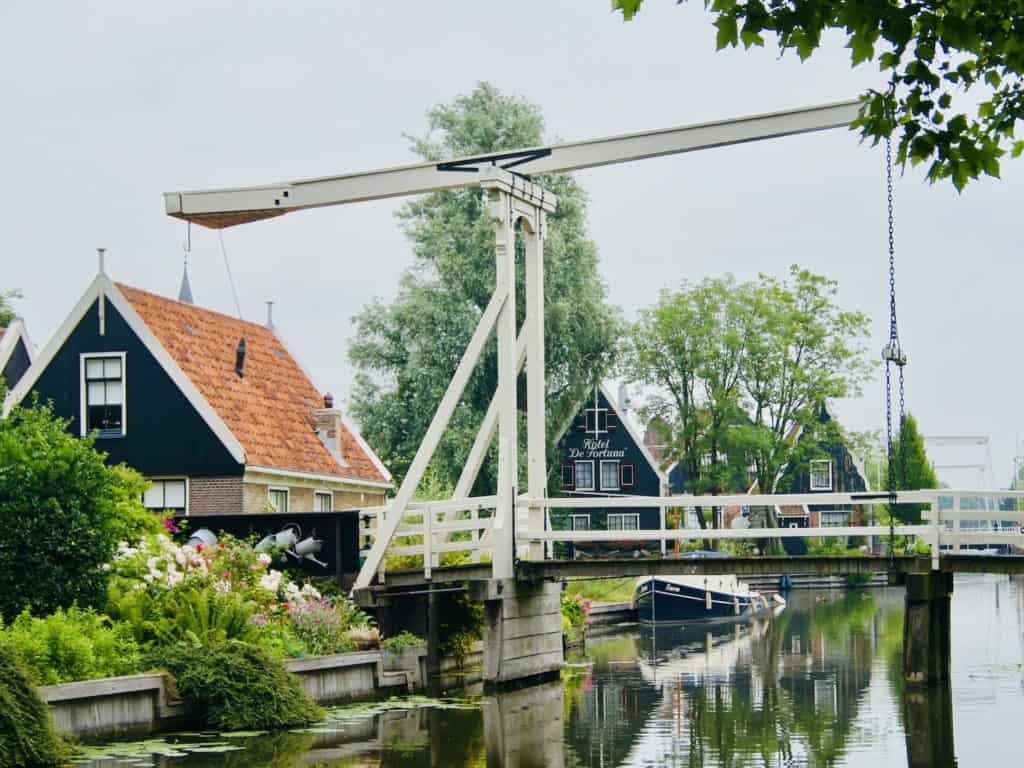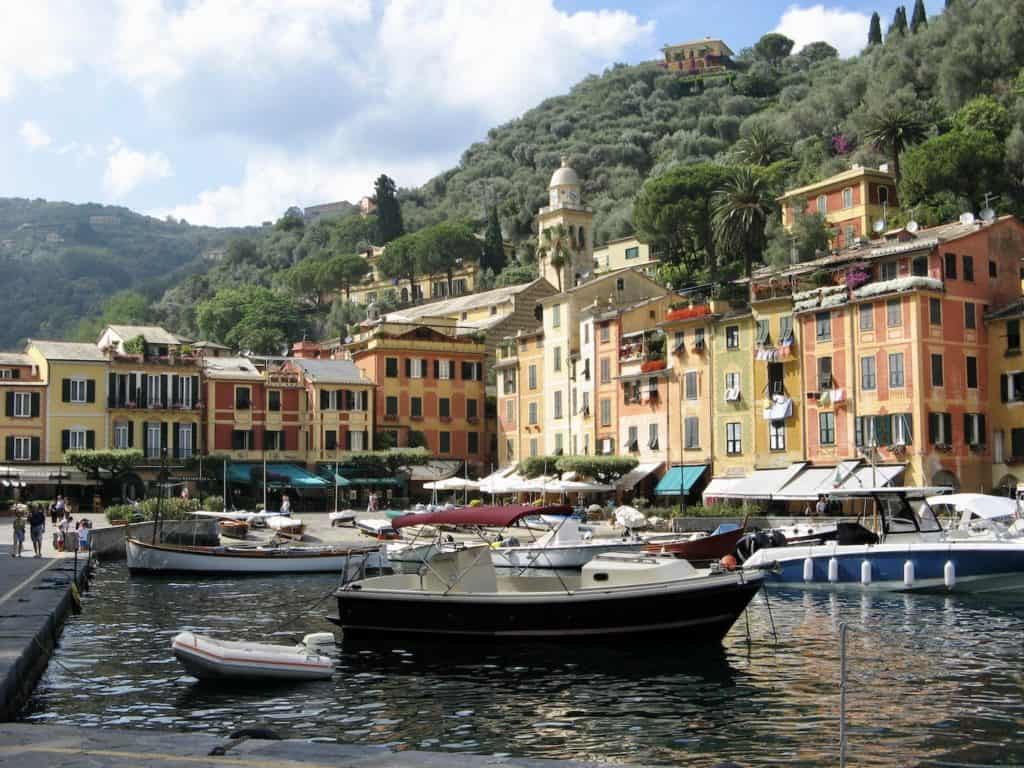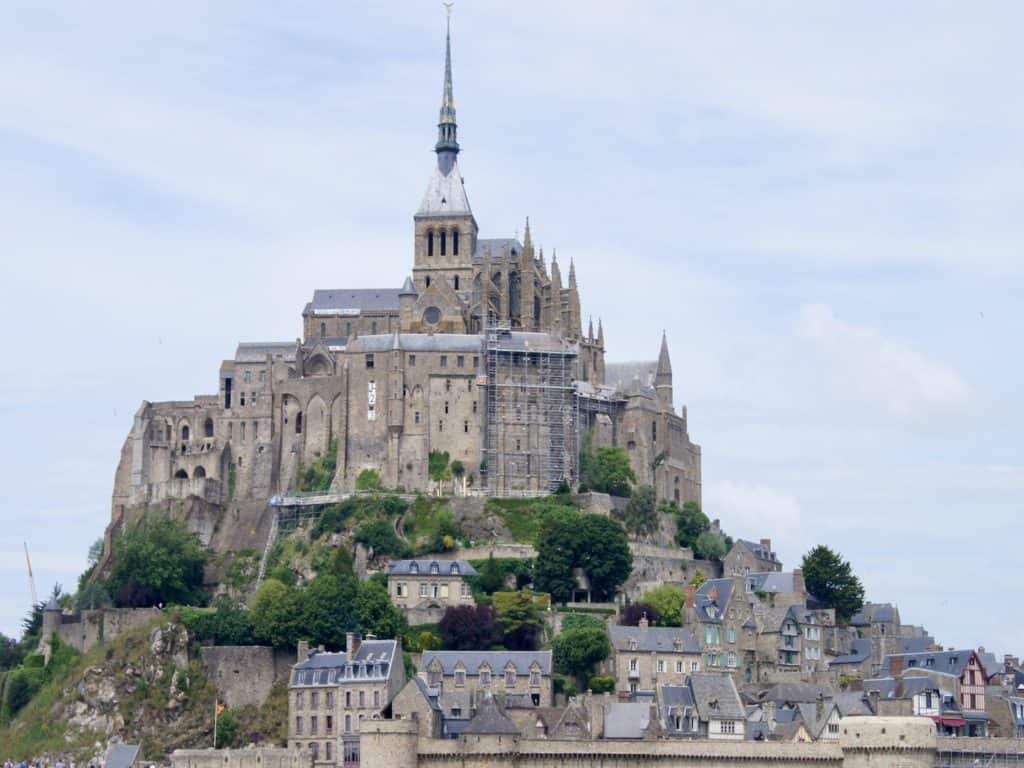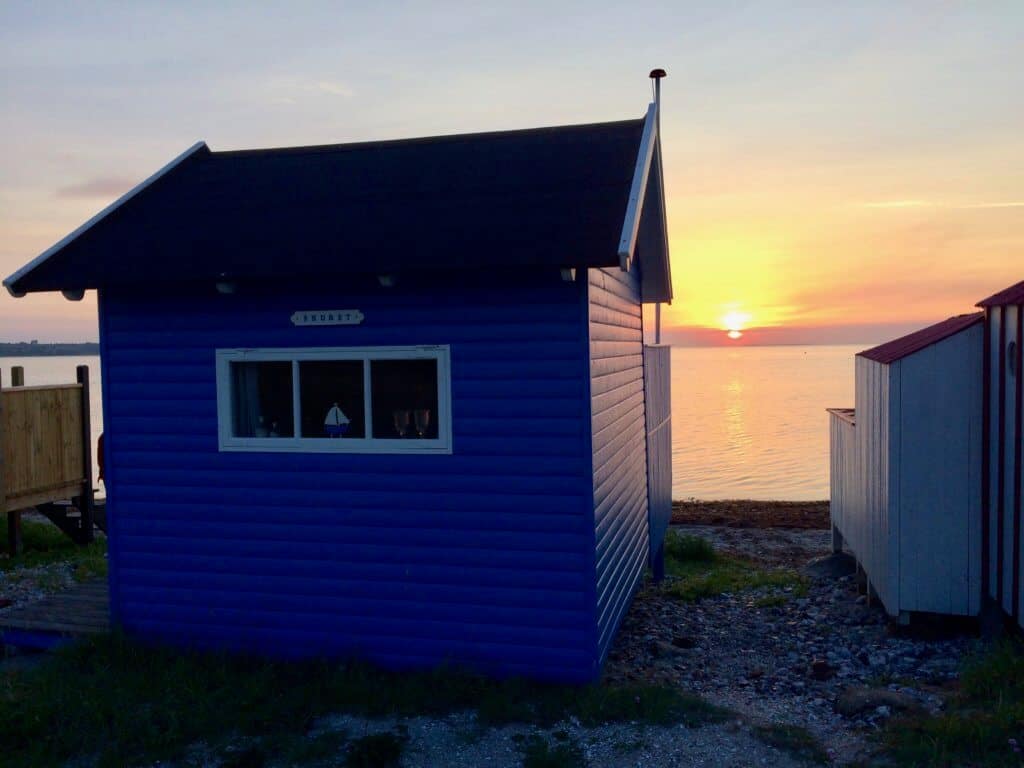Charming Kotor, on the secluded Bay of Kotor (also known as Boka Kotorska or Boka Bay), is a visitor’s delight encased in a small footprint within medieval city walls. Founded centuries ago, Kotor was named a UNESCO World Heritage Site in 2017, recognizing the Venetian 16th-17th century fortifications. Visitors will most likely notice the winged lion of St. Mark, the symbol of mighty Venetian rule, around town. Less than a two-hour drive from Dubrovnik, Kotor is a place to leisurely explore on foot, stopping now and then for some refreshment and window shopping. You’ll no doubt lose your way along the hodgepodge of narrow streets, but that’s half the fun. The town is small, so it makes for a delightful day trip — or choose to stay longer.
Because its larger neighbors, like Dubrovnik, garner more attention and tourist dollars, Kotor is a perfect place to experience old-world city charms without the stifling crowds. My husband and I thoroughly enjoyed our one-day visit to this charming bayside town. We visited historical spots, wandered the meandering narrow streets, shopped, and strolled along the bayside promenade (outside the city walls).
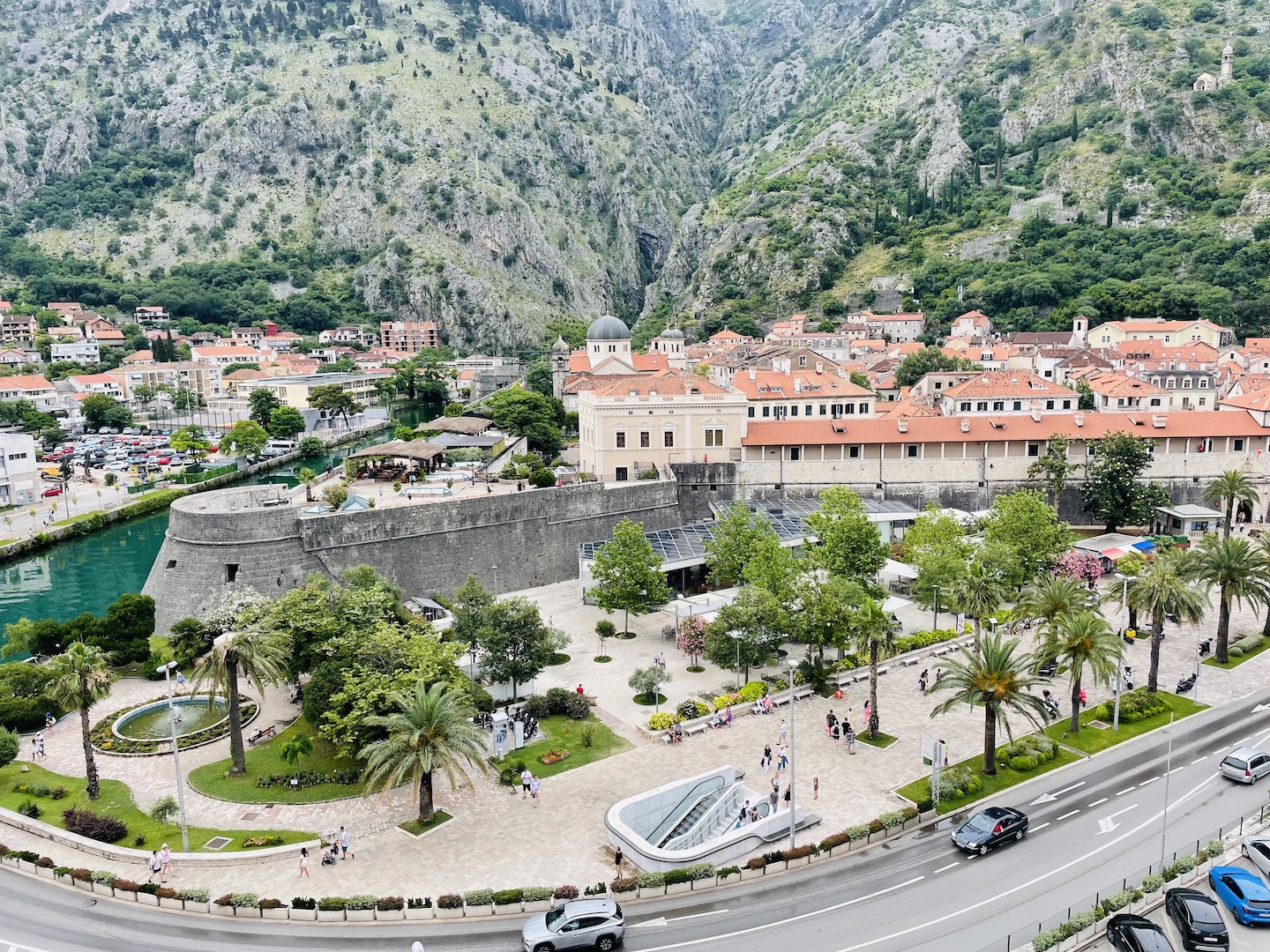
Quick Facts
- Currency: Euro
- Language: Montenegrin is the official language in Montenegro (since 2007), though Serbian, Bosnian, Albanian, and Croatian are also used. Those who work in tourism (e.g., in restaurants and shops) typically speak good English.
- Driving distance to Dubrovnik: 56 miles/90 km; less than a two-hour drive
- Closest airports: Tivat Airport (about 3 miles/5 km away) and Podgorica Airport (about 40 miles/65 km away)
- European Union: Montenegro is seeking membership in the EU (at the time of publication).
- Other: Cruise ships often dock here for a day.
A Brief History of Kotor
Kotor saw its share of foreign rule, including the Romans, Serbs, Venetians, Russians, Austrians, and Yugoslavians. Because it was never the target of military aggression, Kotor is a well-preserved Adriatic seaside town. Nonetheless, several earthquakes (1667 and 1979 being among the worst) and plagues created death and destruction. The 1667 earthquake destroyed many of Kotor’s buildings, and some evidence of that is still seen today. For example, the two towers of the Cathedral of St. Tryphon are not the same size. As one tower is noticeably shorter than the other, it is generally thought to be because funds ran short to complete it after the 17th-century earthquake.
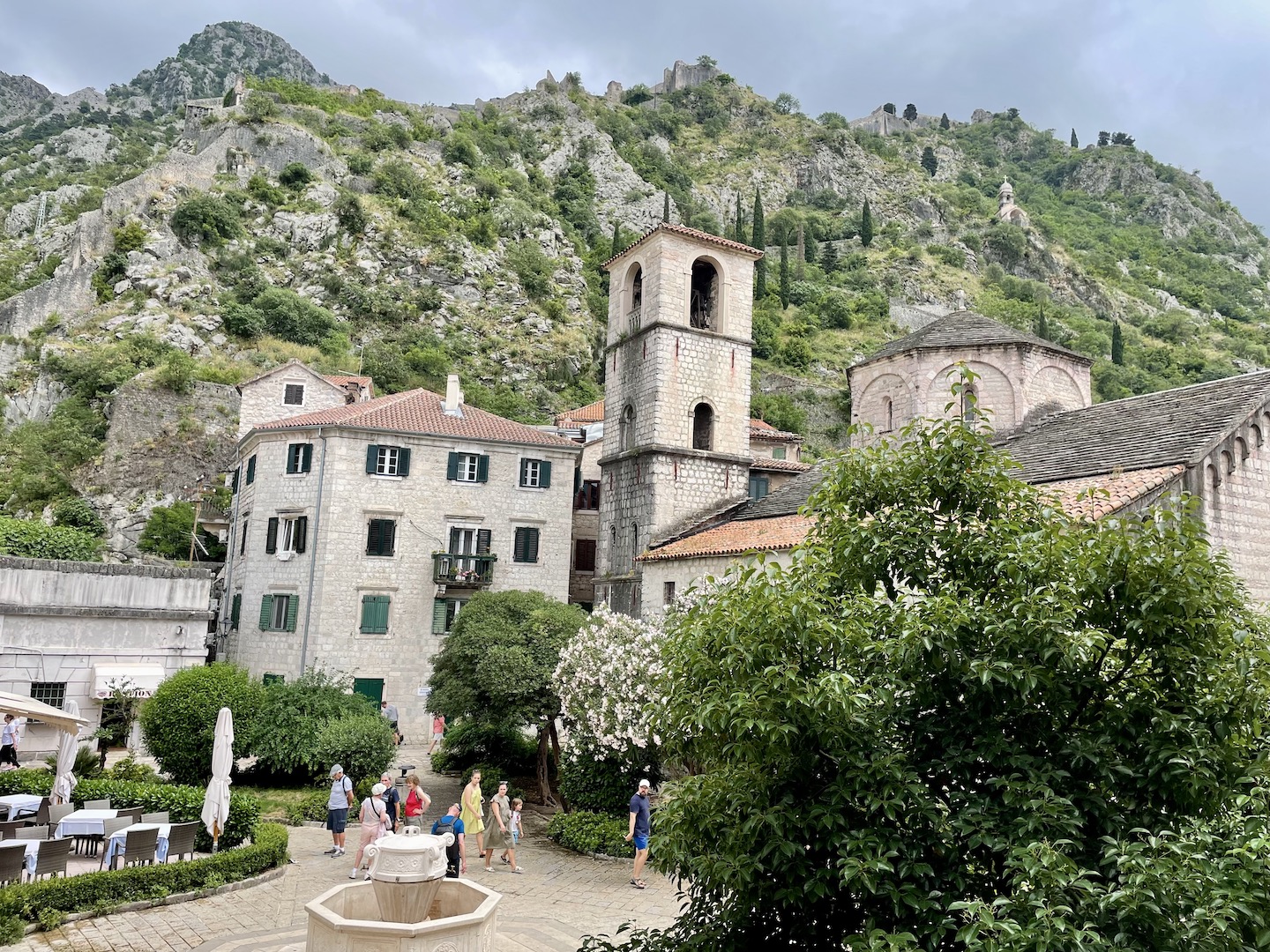
1. Visit Historical Highlights in the Old Town of Kotor
Cathedral of St. Tryphon
This Catholic church houses the remains of St. Tryphon, the patron saint of gardening. In the 9th century, some Venetians traveled with the relics but were sidelined in Kotor due to unrelenting storms. Long story short, they buried the relics here.
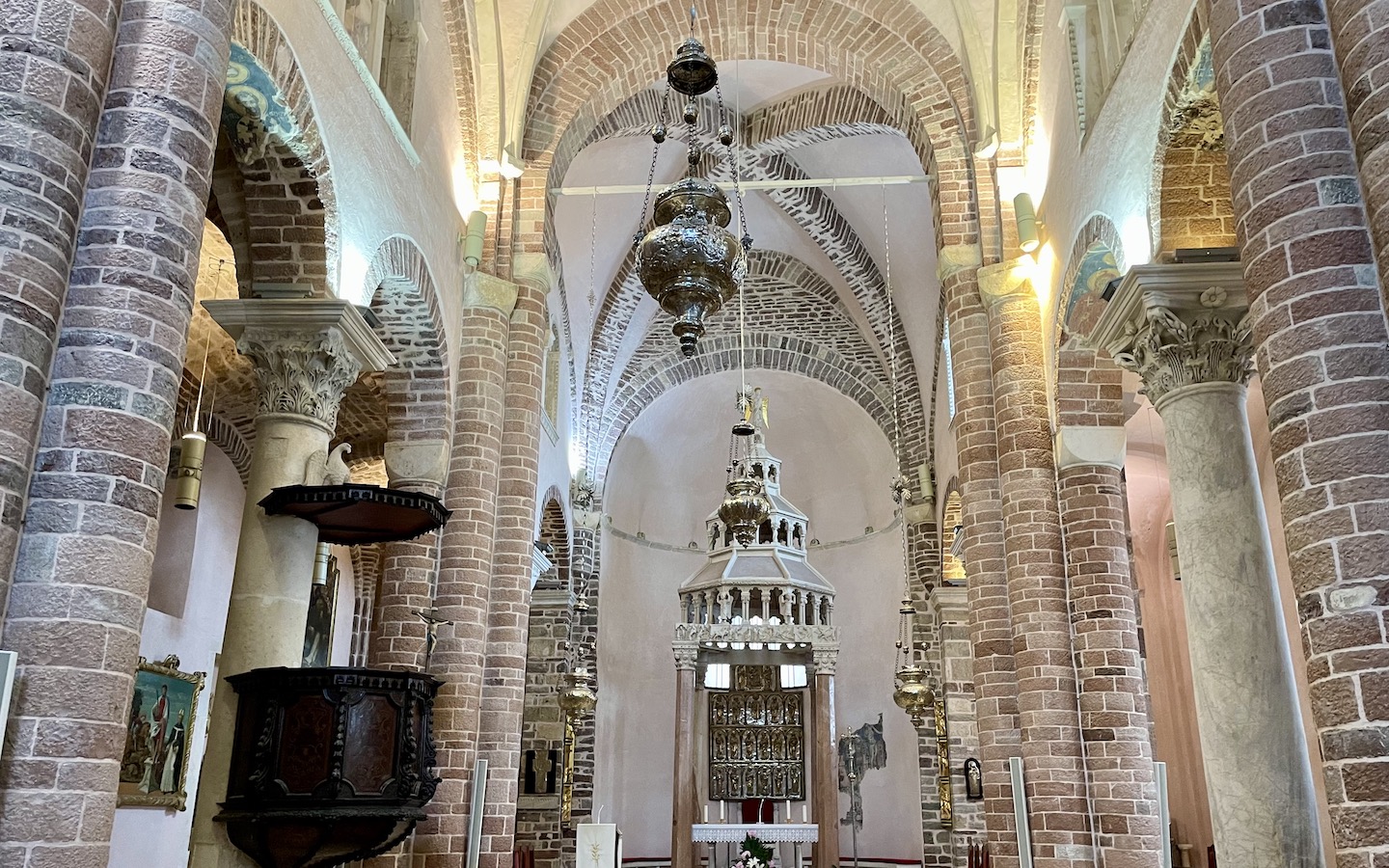
Main Town Gate
One of three, the Sea Gate is the main gate, constructed in 1555, to enter the old town. Above the gate are some carvings depicting the Madonna with Child, Saint Tryphon, and Saint Bernard. Centuries later, the date of the city’s liberation from Nazi rule and a communist star were added above the entrance.
Maritime Museum
Located in the Gregorina Palace, the Maritime Museum of Montenegro showcases the history of the town and its maritime past. Nearly 100 coats of arms represent notable locals. The dozens of model ships, maps, portraits, and weaponry continue the stories of those who lived and worked here for centuries.
Saint Luke’s Square
Two Serbian Orthodox churches stand in St. Luke’s Square: St. Luke’s Church, built in the 12th century, and St. Nicholas’ Church, the larger church constructed in 1909.
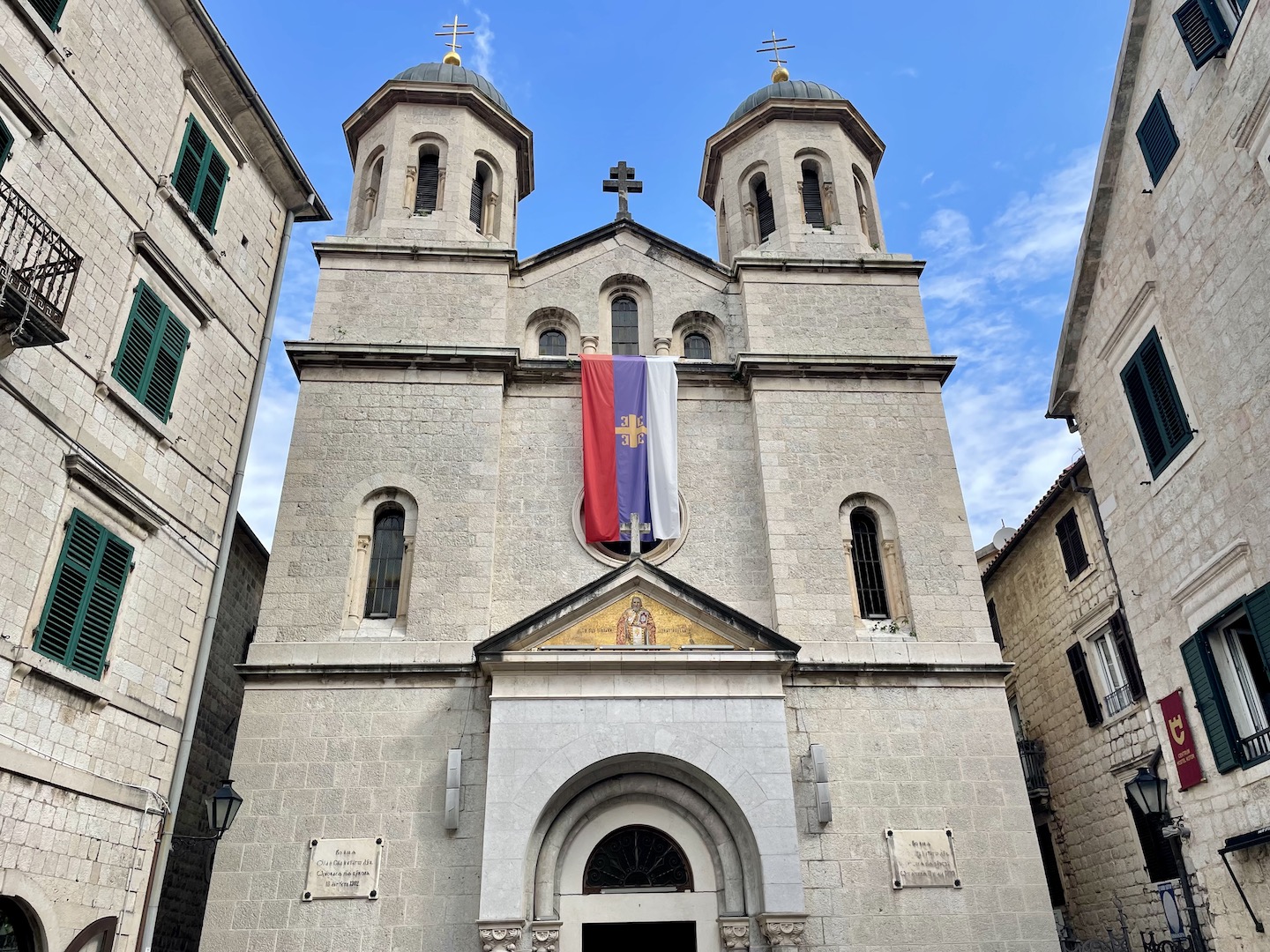
Square of Arms
After entering the town through Sea Gate, you’ll walk into the Square of Arms, which once served as a weapons arsenal dating back to 1420. Today it’s lined with restaurants, cafés, and shops. You’ll also see some of the town walls, the town clock, an obelisk where criminals were tied for public shaming long ago, and a once-Venetian princely palace that is now Hotel Cattaro.
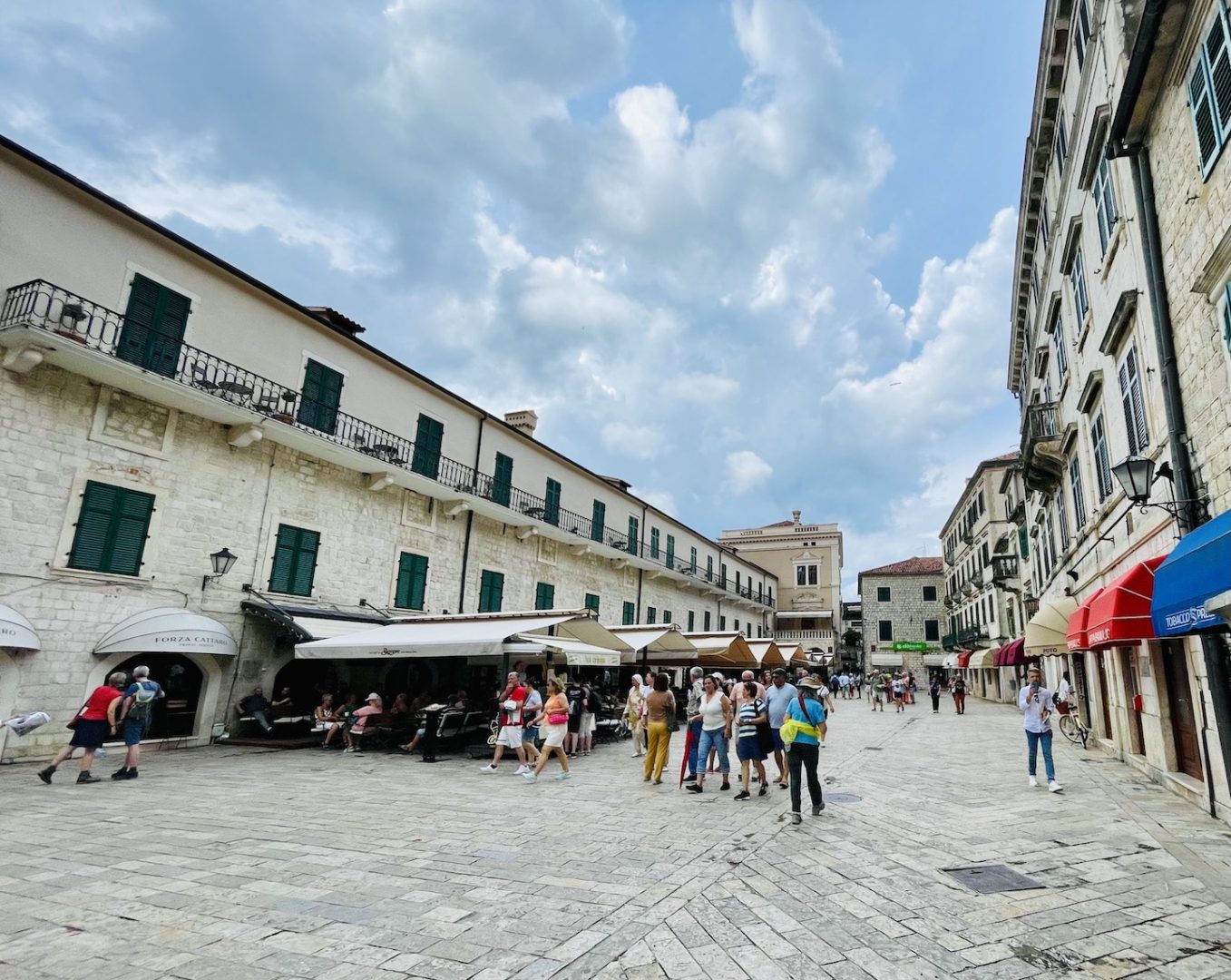
Town Fortification Walls
The town walls, built over many centuries, protected Kotor from invasion. As one might expect, given the length of construction, the walls vary in thickness and height. The 3-mile/4.8-km long wall leads up the mountainous terrain from the waterfront.
Today, visitors can climb the fortifications, but be warned, that there are over 1,300 (sometimes uneven) steps. Climb the first 500+ steps to the Our Lady of the Health Church, constructed in 1518 to secure God’s protection over the city. If you still have the energy, continue climbing till you reach the ruins of the Castle of St. John fortress. Keep in mind that there is an uneven incline to reach the stone steps, which can be slippery, especially after rainfall. If you plan to hike up the fortifications, start early in the day, wear shoes with good tread (no flip flops), and bring plenty of water. Expect the experience up and back to take about 2 hours. Admission is €8.
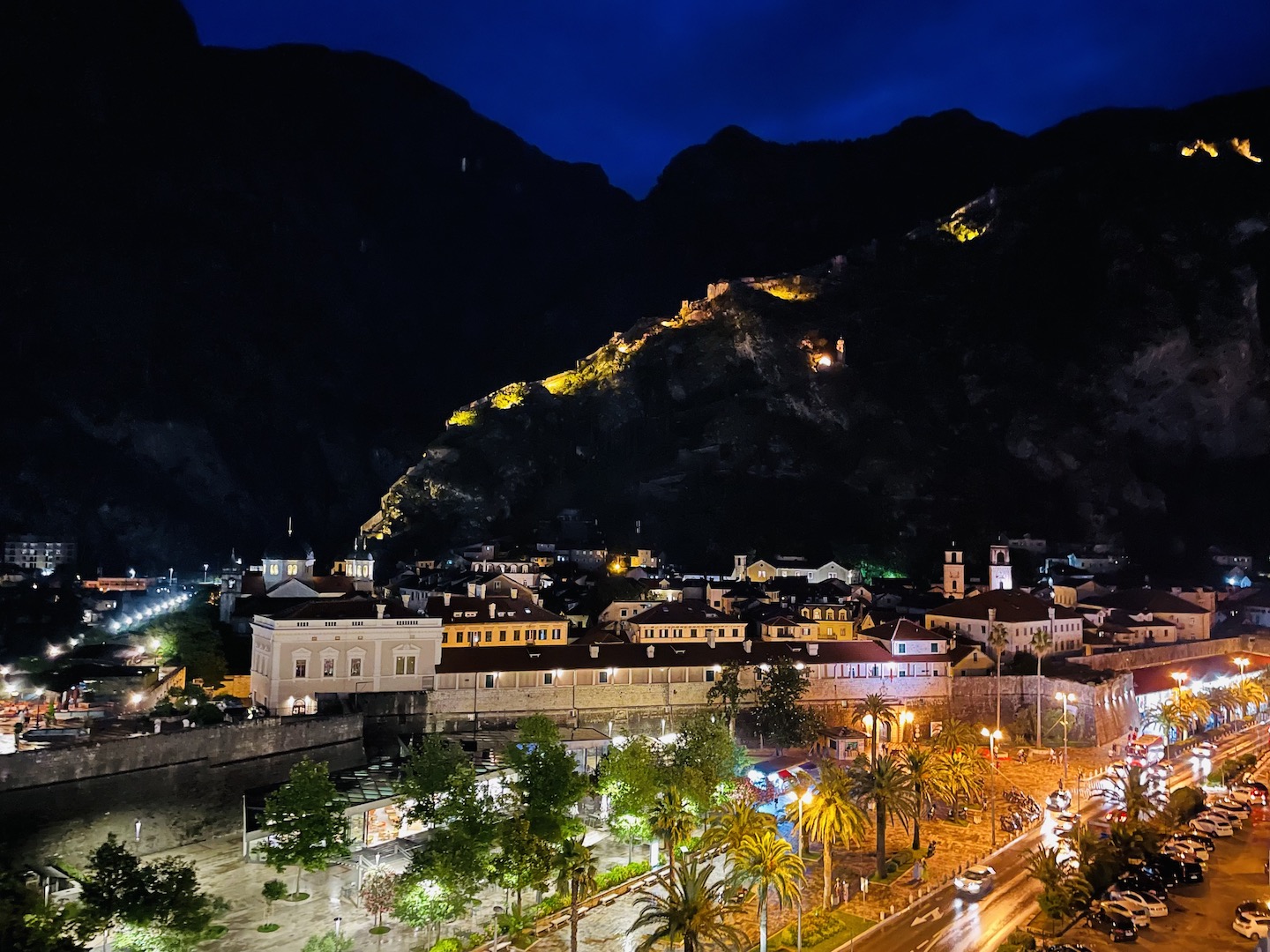
2. Wander Kotor’s Streets
The old town of Kotor is absolutely charming. Walk the maze-like narrow streets to find interesting shops, restaurants, and cafés – all within a few steps of a fascinating historical building or church.
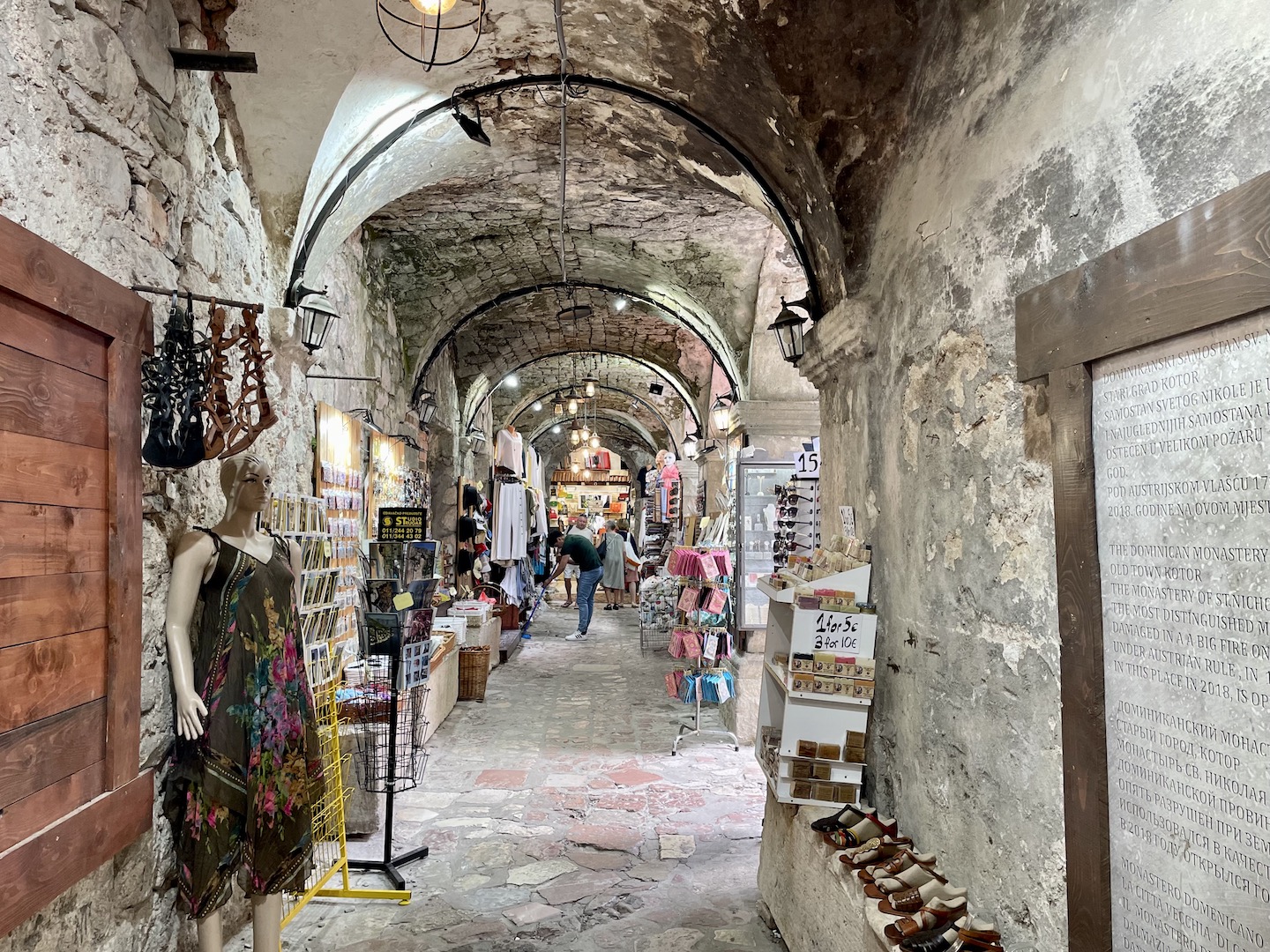
3. Stroll the Seaside Promenade
Outside the city walls is a promenade that provides impressive views of the bay and the mountains as well as a sandy beach. There are places along the way to sit – a perfect way to pause and take in the incredible beauty around you.
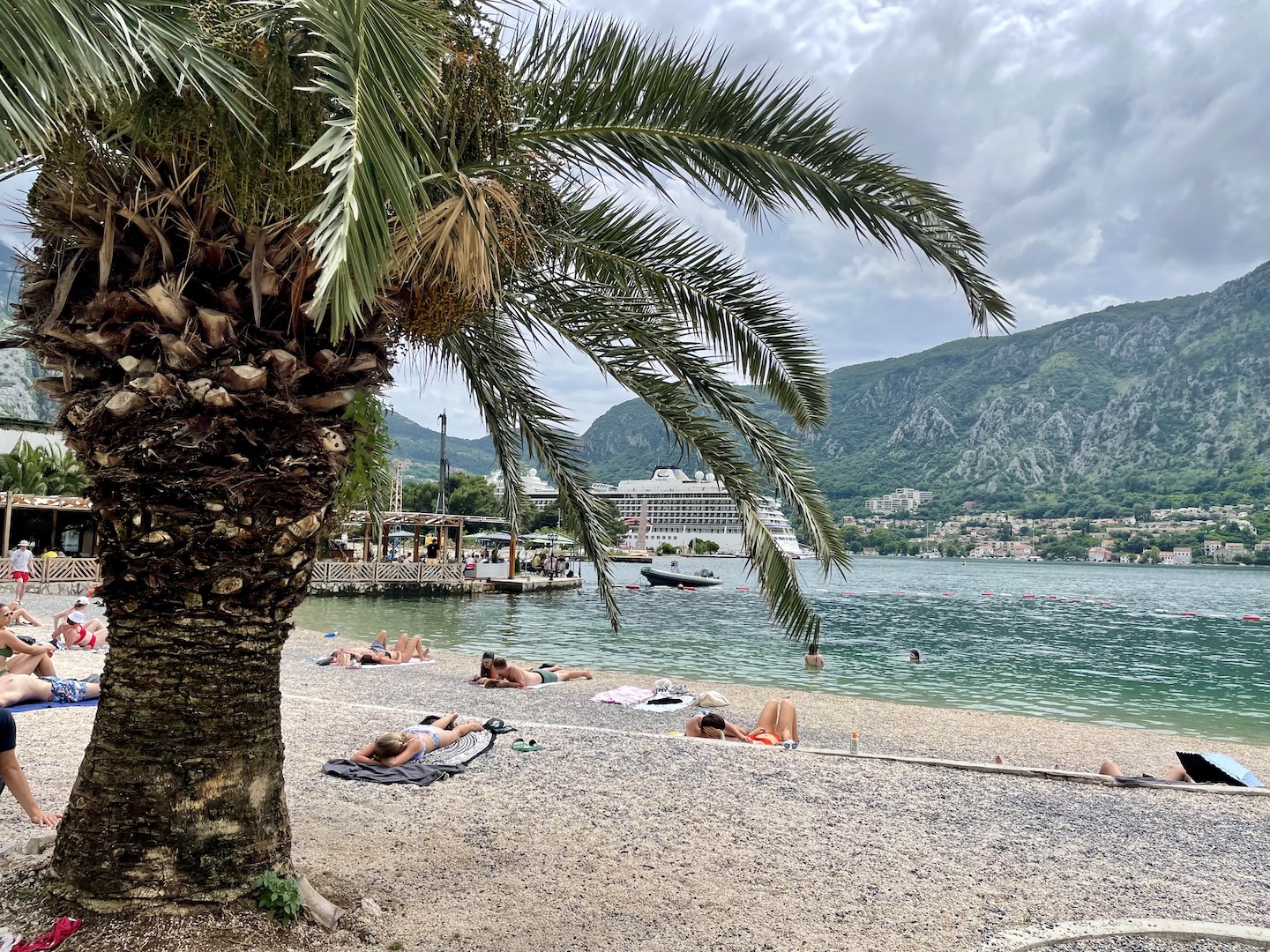
4. Take a Scenic Boat Ride
There are several choices for seeing beautiful Montenegro from the water. Boat tours range from 90 minutes to 3 hours. Decide what you want to see when talking to one of the boat ride vendors, or check online for options. The extended boat tours include a visit to and free time in Perast and the Lady of the Rocks Island. Also, boat tours can include viewing an oyster farm, a submarine base, and the blue cave.
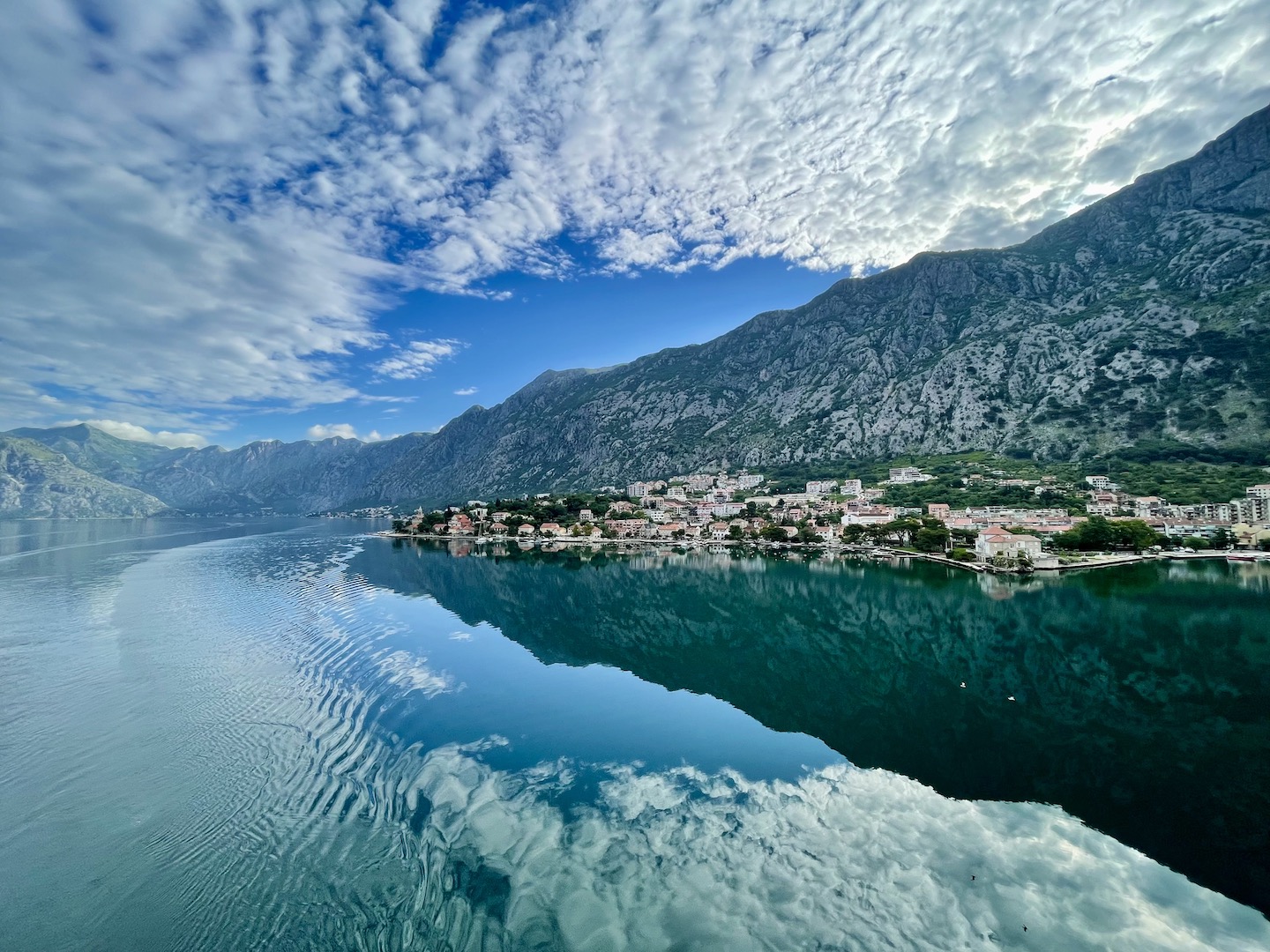
5. Enjoy a Leisurely Meal with Water Views
When hunger strikes and you want to relax over a meal away from the crowds in the Old Town, consider one of the restaurants along the seaside promenade. There are several with tables and chairs along the walkway, providing beautiful water and mountain views. (Check online sites like TripAdvisor to find one that matches your cuisine interests.)
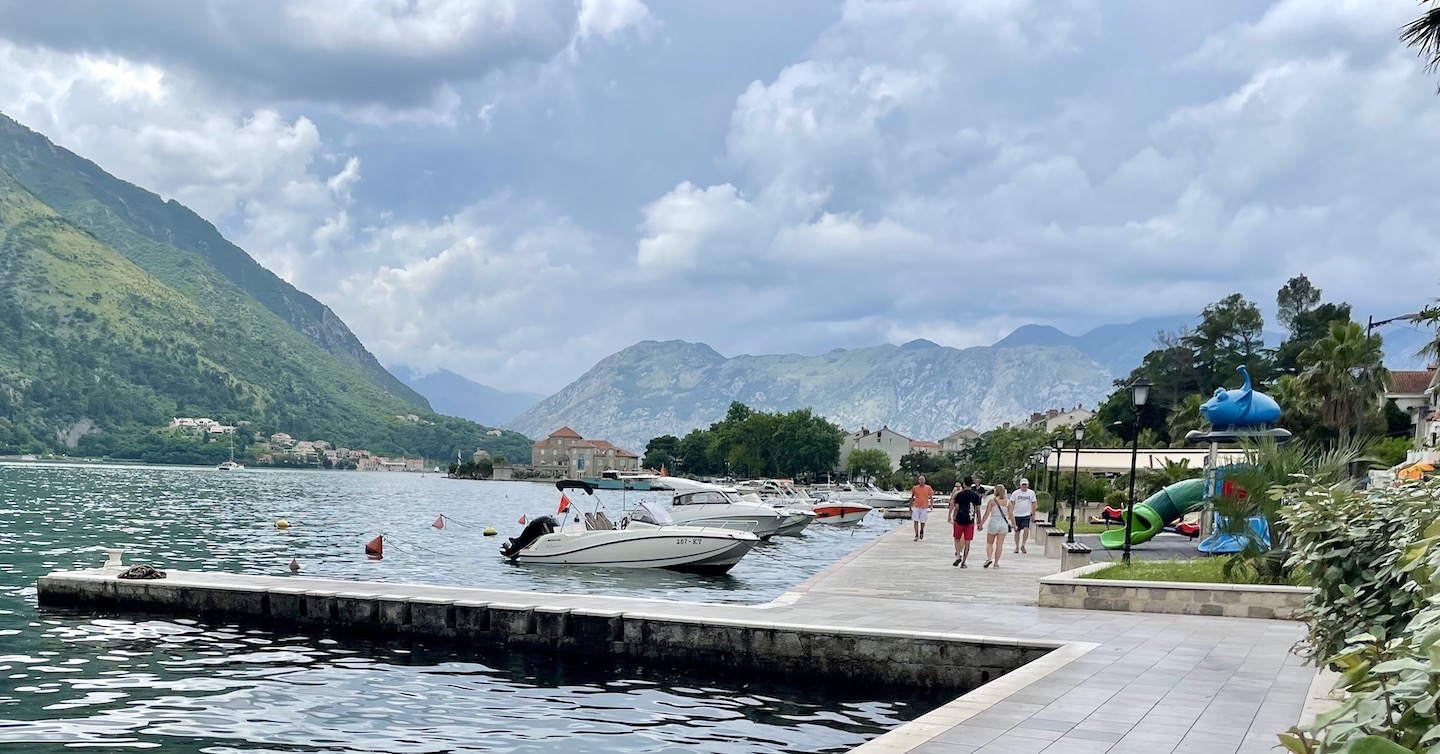
Related Articles
- Best Apps and Websites for Savvy Travelers
- Expert Tips for Traveling to Europe for More Fun, Less Stress
- Google Translate: How to Use it When Traveling
- Renting a Car in Europe
- Travel Planning Timeline
- Viking Ocean Cruises: The Ultimate Guide
Final Thoughts
Kotor is one of the most visited spots in Montenegro, and it’s easy to see why. My husband and I found Kotor a perfect day trip with its incredible scenery, the charming old city, and the relaxing seaside promenade for a stroll and to enjoy a meal with water views.
Comments?
Feel free to share ideas and suggestions for traveling to Kotor or other spots in Montenegro. Your thoughts could help other travelers. Thanks! 🙂

